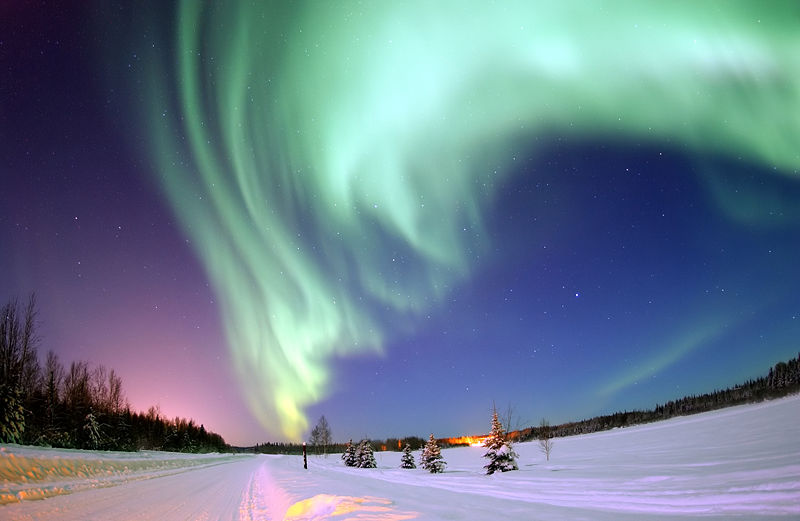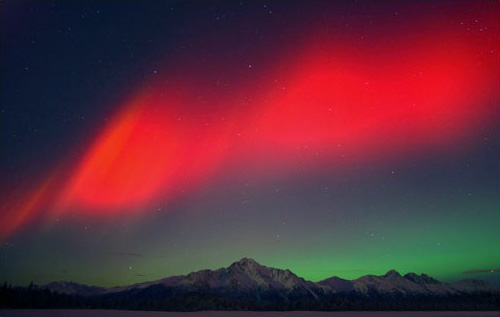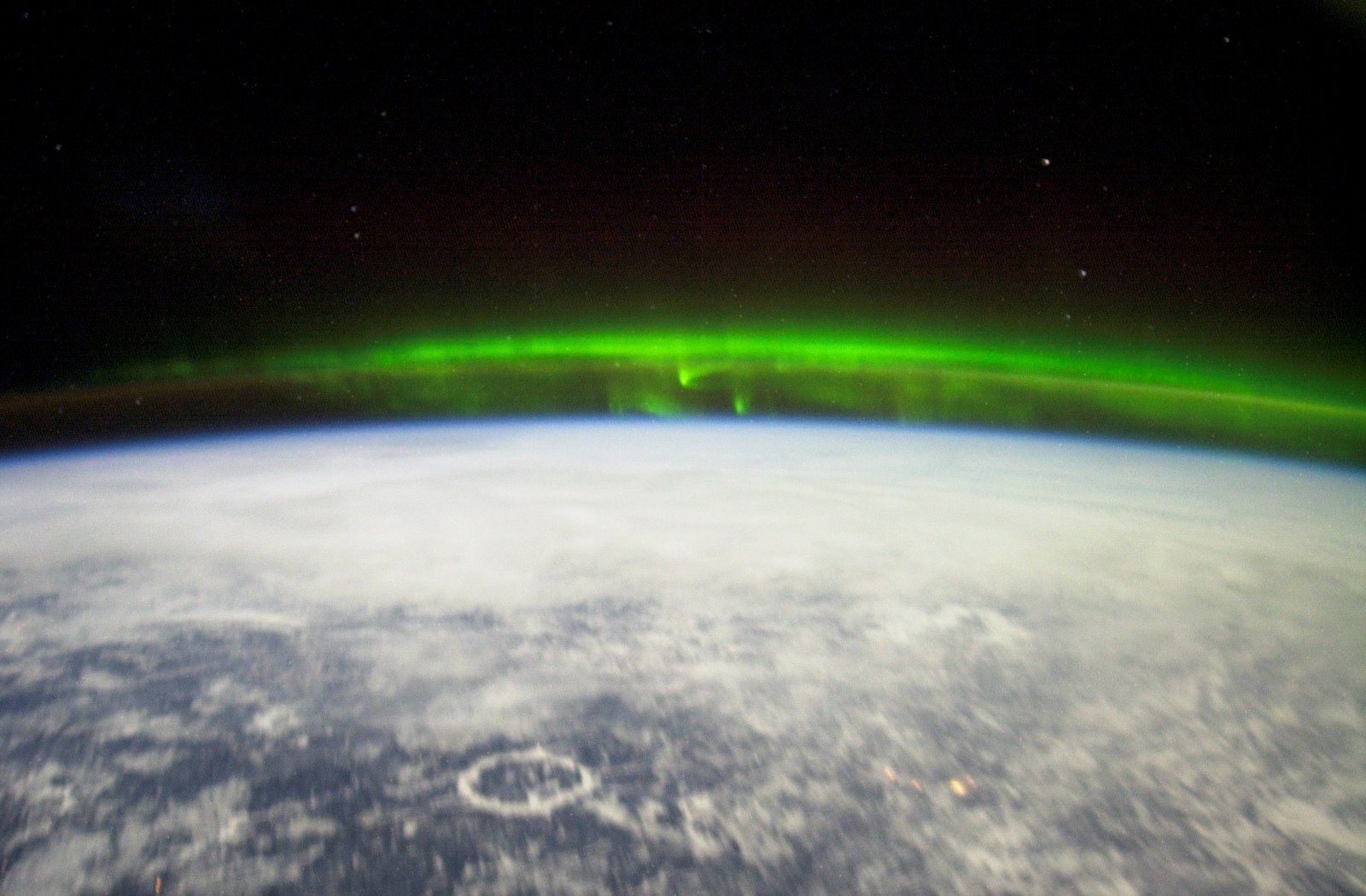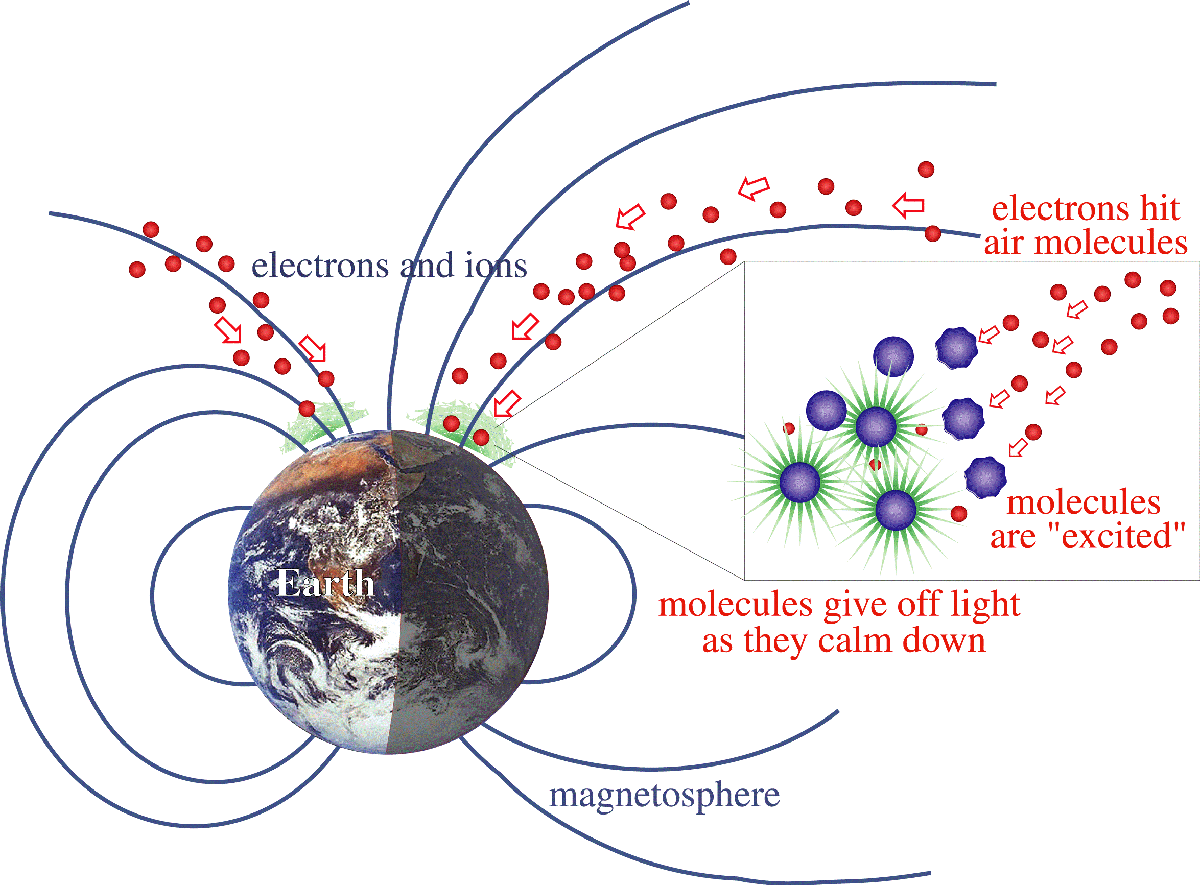Auroras take on different appearances. They can look like an orange or red glow on the horizon - much like a sunrise or sunset. They may also look like curtains or ribbons and move and undulate during the night.
Auroras can be green, red or blue. Often they will be a combination of colors, with each color visible at a different altitude in the atmosphere.
- Blue and violet: less than 120 kilometers (72 miles)
- Green: 120 to 180 km (72 to 108 miles)
- Red: more than 180 km (108 miles)
 Aurora over Bear Lake, Alaska
Aurora over Bear Lake, Alaska Red aurora above Pioneer Peak, Alaska
Red aurora above Pioneer Peak, AlaskaHow do auroras happen? The solar wind from the Sun can bring fast-moving particles towards the Earth. Some of them are then guided by the Earth's magnetic field towards the north and south magnetic poles. As they approach the Earth, the particles interact with the atmosphere making it glow in many different colours and causing the effect we call an aurora.
 A photograph of an aurora borealis taken aboard the International Space Station (ISS)
A photograph of an aurora borealis taken aboard the International Space Station (ISS)The following YouTube video shows the aurora australis captured by NASA's IMAGE satellite and overlaid onto NASA's satellite-based Blue Marble image.
For more information of the aurora, follow the links below:

